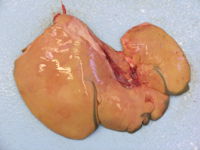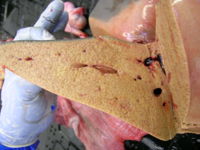Liver Disease (Chronic) - Donkey


This is a very common problem with donkeys in general. Aetiology is uncertain but is often associated with progressive cirrhosis with extensive haemosiderosis. Many older donkeys may have an unknown history and, with the tradition of placing donkeys onto inferior grazing, many animals have been shown to have damage caused by ragwort ingestion.
Fatty change is often seen at post-mortem in hyperlipaemic animals. It may be useful to note that raised gamma glutamyl transferase can be seen in clinically normal animals.
Secondary photosensitization is common in animals affected by chronic liver problems and dermatological lesions are often the first indicator to the condition.
On a comparative note, donkeys with terminal liver damage are dull, anorexic and ataxic (the excitation and head-pressing seen in other equids is unusual in the more stoical donkey).
Treatment of chronic liver disease is supportive therapy.
Literature Search
Use these links to find recent scientific publications via CAB Abstracts (log in required unless accessing from a subscribing organisation).
Publications referring to liver disease in donkeys
References
- Sprayson, T. (2008) The care of the geriatric donkey In Svendsen, E.D., Duncan, J. and Hadrill, D. (2008) The Professional Handbook of the Donkey, 4th edition, Whittet Books, Chapter 13
|
|
This section was sponsored and content provided by THE DONKEY SANCTUARY |
|---|
